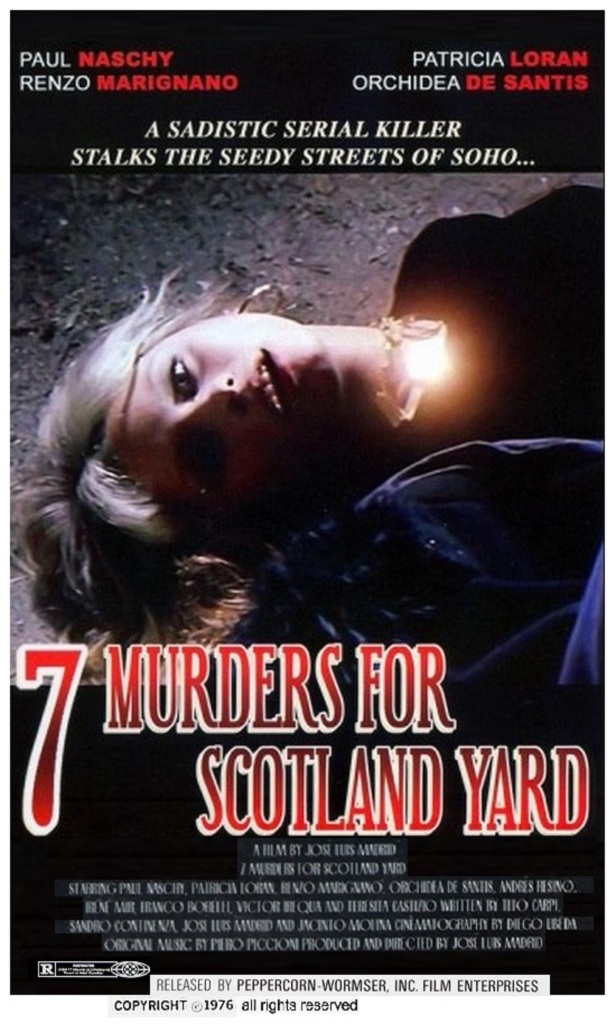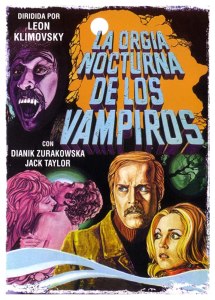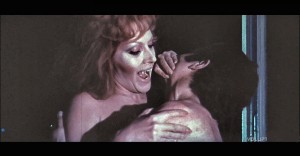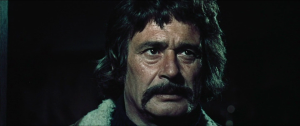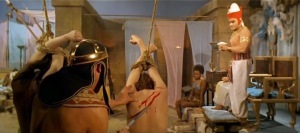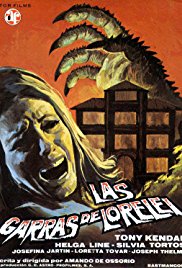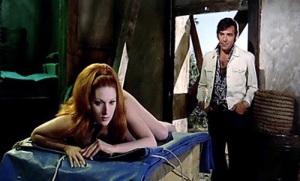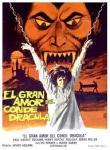‘The lady’s eyes were such a startling shade that I’m keeping them for myself.’
Two prostitutes are murdered in London and specific organs removed in a manner that recalls the crimes of Jack the Ripper almost a hundred years earlier. The police focus their investigations on an alcoholic ex-trapeze artist who was the husband of the second victim…
Euro-horror icon Paul Naschy steps into the world of the Giallo with this London-shot Spanish murder mystery directed by José Luis Madrid. Naschy co-wrote the script under his real name, Jacinto Molina, and he brings a straight horror vibe to the proceedings, assisted by some graphic makeup FX.

After an accident dismounting from the safety net finished his acrobatic career and ended their trapeze act, Bruno Doriani (Naschy) and his wife Belinda (Irene Mir) have moved to London. Naschy spends his days and nights limping from backstreet pub to backstreet pub while Mir keeps them afloat by bringing men back to their flat for sex. Unfortunately, one of her customers turns out to be homicidal, and she meets her end at the point of his blade. The removal of some of her organs matches an earlier killing, and Inspector Campbell of the Yard (Renzo Marignano, who is so tall that he threatens to disappear out the top of the frame at times!) gets handed the entire mess by his smug superior, Superintendent Chambers (Miguel Muniesa).
Naschy is immediately under suspicion, but this has less to do with his relationship with the second corpse as his status in town as a ‘foreigner.’ However, Marignano is not convinced of his guilt, especially after chatting things over with his old friend, schoolteacher Winston Darby Christian (Andrés Resino). Unexpectedly, the academic becomes directly involved in the investigation when the next victim turns out to be Rosemary (Teresita Castizio), a student at the girls’ school where he works. Meanwhile, the police are after Naschy after he kills two thugs in self-defence and starts hiding out on the fringes of the city’s criminal underworld.

All the ingredients are present and correct for a good, solid Giallo. Exteriors were shot on the streets of London, and Naschy wandering around a garish urban wasteland of peep shows and strip clubs provides a real sense of time and place, aided by the excellent, evocative music of composer Piero Piccioni. Updating Jack the Ripper from the smoky taverns and narrow alleyways of the Victorian capital to a modern setting is an excellent opportunity to compare and contrast the different eras. The muted colour palette of photographer Diego Úbeda and the cluttered set decorations of Bruno Cesari and Juan Alberto Soler provides an excellent foundation for this theme. Although we see streets thronged with traffic, the shadow of the 19th Century still seems to hang over these gloomy boarding houses and dark courtyards.
Unfortunately, all that is as good as it gets for Madrid’s unsatisfying film. The story is very poorly structured and often develops clumsily. Considering that Naschy co-authored with Madrid, Juan Alberto Soler and Tito Carpi, he’s offscreen an awful lot of the time with prominence given to the underwhelming police procedures of Marignano and his men. Consequently, our leading man gets no time to delve deep into the character of the embittered acrobat, and he comes over as a dull, one-note miseryguts. The women in the cast are relegated to the roles of potential victims, with second-billed Patricia Loran barely making an appearance and Orchidea De Santis wasted as Resino’s trophy wife and the object of Inspector Marignano’s unspoken affections.
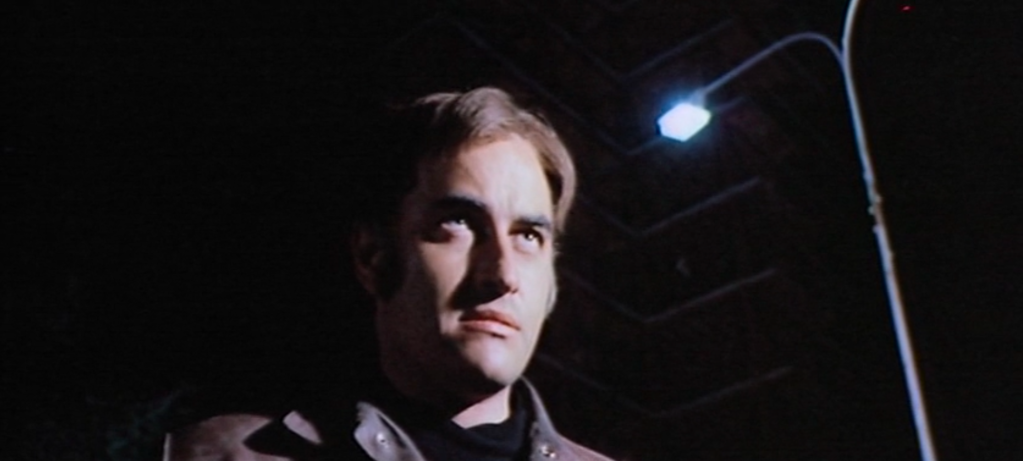
Logic also takes a back seat to plot convenience on a number of occasions, and the viewer is left with several nagging questions. Is it really acceptable police procedure to discuss the confidential details of a murder case with an old friend over a chess game? Why is the straight-laced policeman best friends with a younger, vaguely bohemian guy who teaches for a living? Why are the daggers that the killer uses all from different countries? This seems to be quite important when mentioned and a potential clue, but it never comes up again. Why does the killer take the human organs and store them in jars in a basement laboratory? Some plot summaries mention cannibalism, but I saw no evidence of it. The final nail in the coffin comes with the killer’s psychology and motivations, which are staggeringly simplistic and underdeveloped.
The athletic Naschy was a professional weightlifter who scored a few bits in films and some extra work before penning the screenplay to ‘La Marca del Hombre Lobo/The Mark of the Wolfman’ (1967). Having secured financial backing for the project, Naschy tried to obtain the services of Lon Chaney Jr to play the title role, but the star was too ill to participate. Naschy played the part himself, and the film’s financial success, particularly abroad, launched the actor as a horror star. Over the years, he played lycanthrope Waldemar Daninsky more than ten times and took the vampiric title role in ‘Count Dracula’s Great Love/El gran amor del conde Drácula’ (1974). There were many other horror roles and he also appeared in crime dramas and other mainstream features. He was also often on script duty, and returned to the Giallo for ‘Blue Eyes of the Broken Doll/Los ojos azules de la muñeca rota’ (1974) and ‘A Dragonfly for Each Corpse/Una libélula para cada muerto’ (1975). Despite personal and financial setbacks in later years, he was still appearing in movies at the time of his death in 2009.

Madrid went on to work with Naschy again on a couple of occasions, most notably on mystery-thriller ‘The Crimes of Petiot/Los crímenes de Petiot’ (1972) and fact-based terrorist drama ‘Comando Txikia: Muerte de un presidente’ (1978). His other credits in cult cinema are brief but include ‘O.K. Yevtushenko/Somebody’s Stolen Our Russian Spy’ (1968), the final film in the weak Eurospy trilogy featuring Tom Adams as agent Charles Vine, and the poorly-received shocker ‘The Horrible Sexy Vampire/El vampiro de la autopista’ (1971).
A slapdash script and some poor pacing let down a project with some interesting potential.

